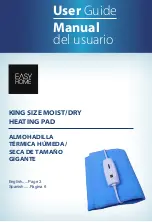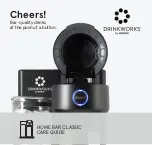
19
Connect the CCN Communication Bus —
The
zone controllers connect to the bus in a daisy chain arrange-
ment. The zone controller may be installed on a primary CCN
bus or on a secondary bus from the primary CCN bus. Con-
necting to a secondary bus is recommended.
At 9,600 baud, the number of controllers is limited to
128 zones maximum, with a limit of 8 systems (Linkage
Coordinator configured for at least 2 zones). Bus length may
not exceed 4000 ft, with no more than 60 devices on any
1000-ft section. Optically isolated RS-485 repeaters are
required every 1000 ft.
At 19,200 and 38,400 baud, the number of controllers
is limited to 128 maximum, with no limit on the number of
Linkage Coordinators. Bus length may not exceed 1000 ft.
The first zone controller in a network connects directly to
the bridge and the others are wired sequentially in a daisy chain
fashion.
The CCN communication bus also connects to the zone
controller space temperature sensor. Refer to the Install Sensors
and Make Field-Wiring Connections section for sensor wiring
instructions.
COMMUNICATION BUS WIRE SPECIFICATIONS —
The Carrier Comfort Network® (CCN) communication bus
wiring is field-supplied and field-installed. It consists of
shielded three-conductor cable with drain (ground) wire. The
cable selected must be identical to the CCN communication
bus wire used for the entire network. See Table 8 for recom-
mended cable.
Table 8 — Recommended Cables
NOTE: Conductors and drain wire must be at least 20 AWG
(American Wire Gage), stranded, and tinned copper. Individual con-
ductors must be insulated with PVC, PVC/nylon, vinyl, Teflon, or
polyethylene. An aluminum/polyester 100% foil shield and an outer
jacket of PVC, PVC/nylon, chrome vinyl, or Teflon with a minimum
operating temperature range of –20
C to 60
C is required.
CONNECTION TO THE COMMUNICATION BUS
1. Strip the ends of the red, white, and black conductors
of the communication bus cable.
2. Connect one end of the communication bus cable to
the bridge communication port labeled COMM2 (if
connecting on a secondary bus).
When connecting the communication bus cable, a
color code system for the entire network is recom-
mended to simplify installation and checkout. See
Table 9 for the recommended color code.
Table 9 — Color Code Recommendations
3. Refer to Fig. 27. Connect the other end of the commu-
nication bus cable to the terminal block labeled CCN
in the zone controller of the first air terminal. Follow-
ing the color code in Table 9, connect the Red (+) wire
to Terminal 1. Connect the White (ground) wire to Ter-
minal 2. Connect the Black (–) wire to Terminal 3.
4. Connect additional zone controllers in a daisy chain
fashion, following the color coded wiring scheme in
Table 9.
NOTE: The communication bus drain wires (shield) must
be tied together at each zone controller. If the communica-
tion bus is entirely within one building, the resulting contin-
uous shield must be connected to ground at only one single
point. If the communication bus cable exits from one build-
ing and enters another building, connect the shields to
ground at a lightning suppressor in each building where the
cable enters or exits (one point only).
Water Valve Installation
Water valves are field supplied. Carrier offers two different
hot water valve applications: on/off and floating point modulat-
ing proportional control. See Table 10 for specifications for
compatible water valves. To connect the field-supplied water
valves to the wiring harness terminal board located in the ter-
minal control unit, refer to the wiring labels for the control
package.
Table 10 — Valve Specifications
ComfortID™ Start-Up
GENERAL — Air volume delivery to the conditioned space
is controlled by the modulating of the primary air damper and
the sequencing of the air source supply fan. The controller po-
sitions the damper by way of an actuator and turns the fan on
and off through linkage for the CCN compatible air source
equipment control.
PRIMARY SYSTEM CHECK
1. Check that all controls, control box, and ductwork have
been properly installed and set according to installation
instructions and job requirements.
2. Check that final filters have been installed in the air-
handling apparatus. Dust and debris can adversely affect
system operation.
3. Check fan and system controls for proper operation.
4. Check electrical system and connections of any optional
electric reheat coil. If hot water reheat is used, check pip-
ing and valves per job drawings.
5. Check that all air duct connections are tight.
6. See that all balancing dampers at box outlets are in full-
open position.
ComfortID CONTROL SYSTEM CHECK
1. Check interconnections between thermostats and unit
controls.
2. Force all dampers to control to the maximum cooling cfm
using the Building Supervisor, ComfortWORKS
®
, Net-
work Service Tool or ComfortID Test and Balance Tool
software.
3. Set supply-duct balancing dampers, if used, in maximum
cool position.
MANUFACTURER
CABLE PART NO.
Alpha
2413 or 5463
American
A22503
Belden
8772
Columbia
02525
SIGNAL TYPE
CCN BUS WIRE
COLOR
PLUG PIN
NUMBER
+
Red
1
Ground
White
2
–
Black
3
Disconnect power before wiring the terminal control unit
or electrical shock and personal injury could result.
Follow the valve manufacturers recommended installation
instructions.
TYPE
ON/OFF
VALVE
3 POINTS
FLOATING
VALVE
Voltage
Frequency
Power Requirement
24 vac
50/60 Hz
Not to exceed 15 va
24 vac (15%)
50/60 Hz
Not to exceed 15 va
max inrush






































